Tips From Sticks-In-The-Mud Woodshop
by Jim Randolph
Long Beach, Mississippi
Click on any picture to see a larger version.
Welcome to "Tips From Sticks-In-The-Mud Woodshop." I am a hobbyist, not a professional, someone who loves woodworking, just like you do. I have found some better ways to accomplish tasks in the workshop and look forward to sharing those with you each month, as well as hearing your problem-solving ideas.
Tip #1
Do you own a pressure washer? Many do, now that they are so affordable. And, we know that pressure-washing "found" and "distressed" wood is a good way to protect your tools from the damaging effects of dirt, grime and embedded rocks. If you don't already have a pressure washer, the cost of renting one doesn't make good economic sense unless you have enough work to keep it busy 24 hours or more.
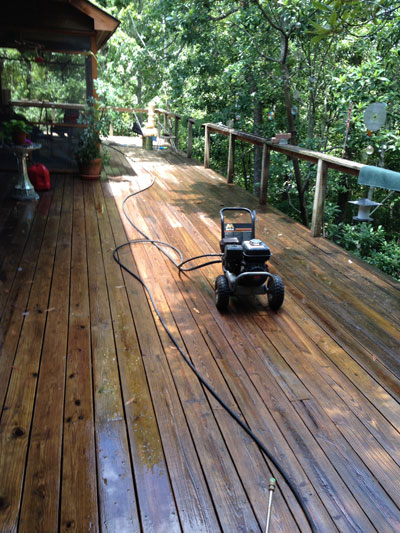
|
|
Despite the bugs and heat, life on the Bayou requires
that one love the outdoors. As a result, we have acres of
deck space around our home, front and back. Thanks to the heat,
humidity and overhanging vegetation, mold grows unabated.
Pressure-washing every other year rids us of the slipperiness.
(After this washing I am beginning a trial of Wet And Forget,
as well as another mildewcide.)
|
However, there is a pressure washer right around the corner from your house that is reasonably priced.
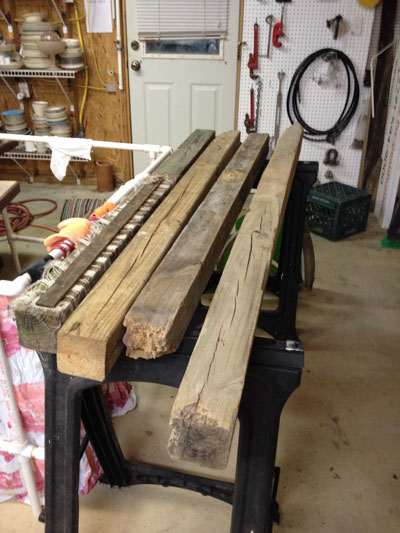
|
|
While I had the power washer rented it was a perfect
opportunity to clean up these salvaged 4x4s I'm using in the
deck railing I promised my bride for her art studio
deck 17 years ago!
|
Your local do-it-yourself car wash. Load your boards, put on your rubber boots and raincoat and, when you arrive, lay your boards out in easy reach
before
putting your dollar in the machine.
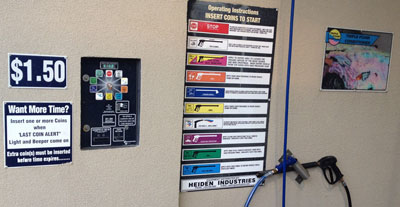
|
|
Before you "drop that dime" (more like $1.50!) be
completely ready to wash. At the car wash, time is money!
|
Depending on the type of grime present, you may want to make your first pass on the "SOAP" setting. Don't worry about the soap interfering with your finish; by the time you power-rinse and complete milling operations, any soap residue will be long gone. Finish with plain water and be sure to clean all six surfaces of every board.
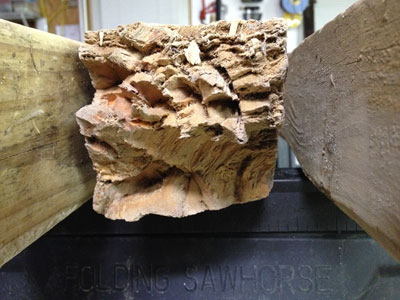
|
|
Even if you're cutting off the end of a board, you don't
want your cutting tools running through dirt
embedded in the end grain.
|
For tips on metal detection,
CLICK HERE
.
Tip #2
No Southern-fried Southern boy wants to be called a Yankee, but we share the characteristics of shrewdness and thrift. Thus, each month we include a money-saving tip. It's OK if you call me "cheap."
Having been raised by five children of the Depression, I can't bear to waste anything. When we finish a coat of paint on a project there is still a lot of paint in the brush. "Work it out" on your project and you're going to have some really ugly brush marks.
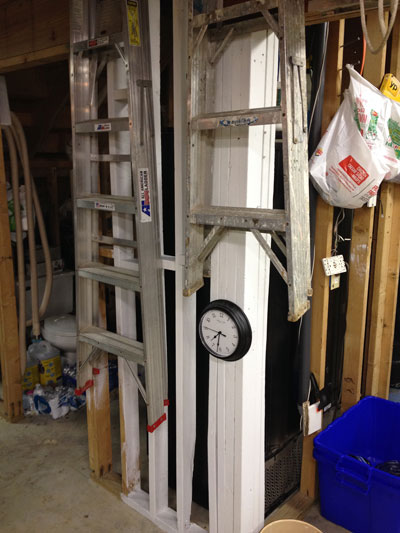
|
|
The open-air bathroom of our garage is my go-to spot to
work out paint brushes with white paint and/or primer.
Eventually,
all
of these studs could be white. Eventually!
|
There are probably dozens of things around your shop and home that could use some paint, though, and it may not matter to you whether the colors match, or even coordinate. See this picture of my
elevated sanding box?
.
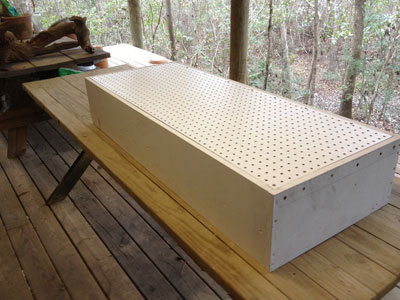
|
|
Not only was the building of this box almost free, its
protective coat of paint is, too! A painted surface is also
easier to clean than bare, absorbent wood.
|
All of that is free paint. See my ugly, multicolored trailer?
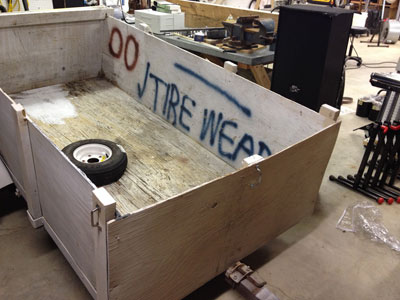
|
|
At one time I had a bent axle, which was causing the trailer
to eat tires when it was heavily loaded. To combat
forgetfulness, I wrote myself a note in paint because I
couldn't get a Post-It Note to stick and stay! The circles are
from clearing the nozzles of spray cans.
|
All free paint. Now the wood is protected and not only am I not out a penny, it will take less time to clean the brush because I've removed a substantial amount of paint.
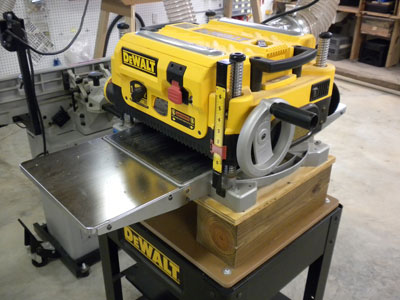
|
|
Every time I use wipe-on poly I apply the excess to these
treated 6x6s and plywood that raise my planer to a more
comfortable height.
|
Jim Randolph is a veterinarian in Long Beach, Mississippi. His earlier careers as lawn mower, dairy farmer, automobile mechanic, microwave communications electronics instructor and journeyman carpenter all influence his approach to woodworking. His favorite projects are furniture built for his wife, Brenda, and for their children and grandchildren. His and Brenda's home, nicknamed Sticks-In-The-Mud, is built on pilings (sticks) near the wetlands (mud) on a bayou off Jourdan River. His shop is in the lower level of their home. Questions and comments on woodworking may be sent to
DrRandolph@MyPetsDoctor.com
. Questions about pet care should be directed to his blog on pet care,
www.MyPetsDoctor.com
. We regret that, because of high volume, not all inquiries can be answered personally.
Return to
Wood News
front page


